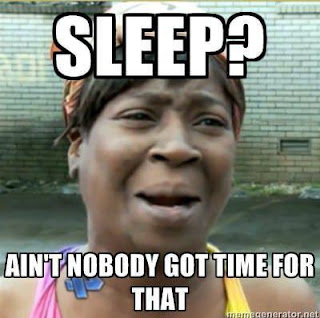Before I start, it's important to keep in mind the following:
- If you want to achieve goals, you must acquire habits that help you accomplish them.
- Nothing will change if you don't stop making excuses. If the time to make a change isn't now, then when?

These two things are essential in understanding what I'm about to tell you next.
"Getting out of your comfort zone" may be one goal in a larger chain of goals you have in mind.Once you achieve it, all other goals can be accomplished with greater ease. So how could a habit look like that helps you get off your lazy bumcheeks?
Find something...
- that doesn't require a huge effort to start doing (highly accessible)
- that pushes you to the limit, at your own discretion
- lets you explore and expand said limits.
Let me show you two of these habits I acquired:
- Taking cold showers. Cold showers expand your blood vessels, thus giving your metabolism a rush of energy. They may help if you are struggling with making physical exercise a habit, too. The fact you are forcing yourself to cold water exposure is a perfect way to teach yourself to get out of your comfort zone (and defeat the "innere Schweinehund" - the "inner lazy skunk" - as we Germans say). If you shower everyday make it a habit! That being said, you don't have to jump right into cold water. What I do is to wash myself normally, then proceed with cold shower, gradually making the water colder - and remain in the shower for a maximum of two minutes. Next time I'd shower I will try to make it even colder, trying to push my own limits. Keep in mind that if you notice you start shivering or feel your limbs are getting numb, you should stop with the shower and get yourself warm as soon as possible. Push your limits, but never drive it too far!
- Physical exercise. Similarly to taking cold showers, it fires up your metabolism. Besides it keeps you fit and healthy. To make exercise a habit, I started doing situps before going to shower in the evening. For me personally I choose a familiar environment for exercise (the bed in my room), which meant less effort for me to start doing it. You can do whatever exercise you feel most comfortable with, like stretch lessons, situps, yoga - simply chose the lesser evil ;). Just keep in mind that workout - if done wrong - can be damaging to your health (like kickboxing with limb weights on). So if in doubt, I highly recommend seeking professional advice.
But beware: Do not ever think about slipping on any of these habits. If you don't have time for them now, you're not going to have time for them later - because you are more inclined to find an excuse for not doing them at all. Try to remember this: If you're not investing in good habits now, then when?
What will remain if you lost everything you have? You. So invest in yourself. Because you are the most valuable asset you have.















